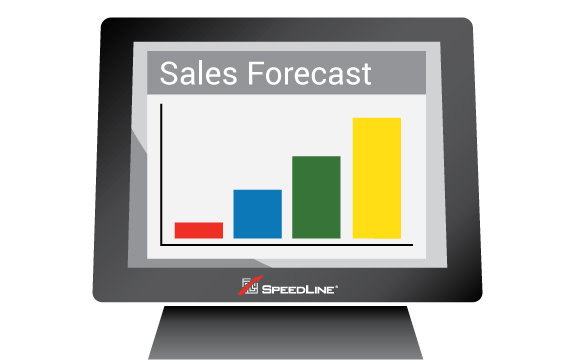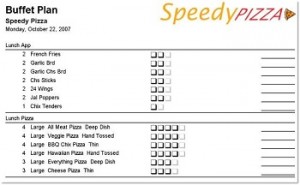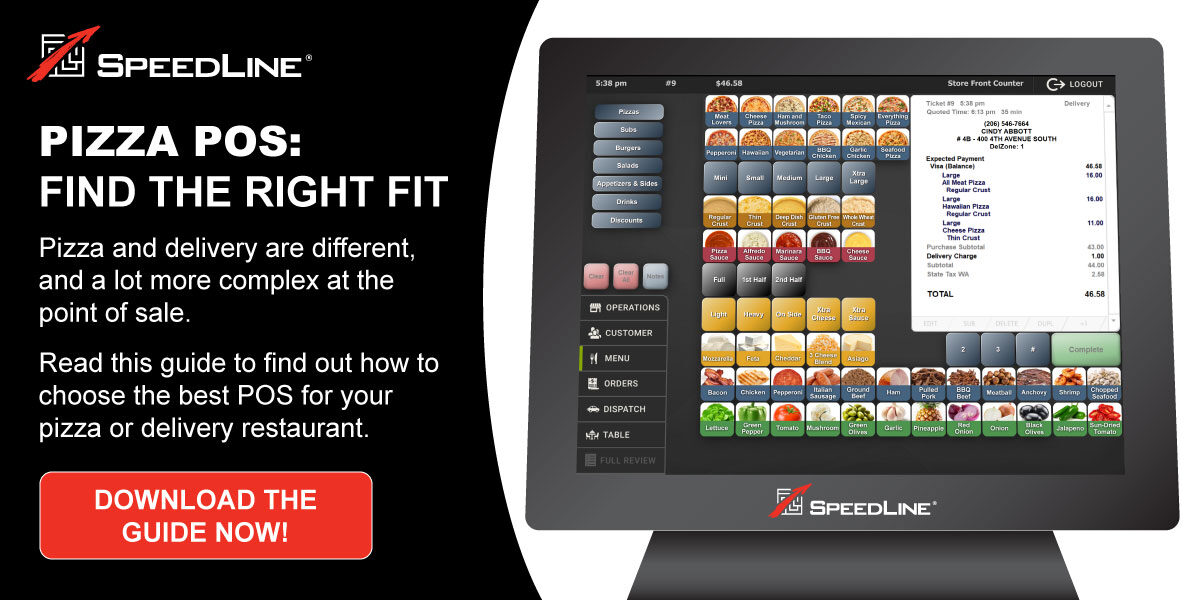Buffets attract families and hungry lunchtime crowds, and can set you up to cater large parties, business meetings, and family gatherings. But managing a buffet profitably takes good information.
Meet your customer demands with minimal waste using buffet planning. Consider these 4 C’s for setting up planning in the SpeedLine POS system:
1. Configuration
Start your setup on the Buffet Setup tab, in the Operations Planning section of Store Manager. Select the “active” check box to activate planning, and then choose the order type to report sales under. Add and name your times (lunch, dinner), and then define menu items like “Kid’s” and “Adult” for prep planning and inventory tracking.
2. Consumption
Consumption is a key consideration in planning. With individual menu items, you know how much the guest ate, but with a buffet, they are free to “graze” on any number of items. In SpeedLine you have two options for determining how much was used: estimate usage with a consumption factor, or enter actual usage in the POS.
With a consumption factor, the prep plan is based on your previous observations of how much guests eat. For example, if experience tells you that a child ordering a Kid’s Buffet would generally consume two slices, or one-quarter of a pizza, you would enter a consumption factor of 0.25 for the kid’s buffet. If your adult guests on average eat four slices, or half a pizza, their consumption factor would be 0.50.
With the actual usage or “entry” method, the prep plan is based on the actual number of items you have used on previous days. Templates in Terminal make it easy to record what you used each day. If you’re using Inventory software, the actual usage method is usually preferred, because it removes the correct amounts out of stock. That said, if you take the time to fine tune your consumption factors (see Correction, below) you can approach entry method accuracy without the need to manually enter usage at day end.
3. Calculation
Based on past sales, the POS system will calculate the number of pizzas required to meet future demand. To specify what varieties of pizza are used in the buffet, you create a template and load it with the pizza flavors and sizes you normally put out on the table. This template, consumption factors if entered, and the number of adult or kid’s items sold are used to calculate usage and estimate prep amounts.
4. Calibration
Calibration is important. Did the projected sales meet expectations? Keep an eye on the Prep Variance report, which shows the difference between what the buffet plan projected and what you actually sold. Fine tune your consumption factors as needed. You can also modify the buffet prep plan based on special events, holidays, weather, or other factors by adjusting the Store Plan columns on the Buffet Plan.
SpeedLine POS software takes the guesswork out of buffet planning, providing an easy to use tool designed to meet customer demand, while minimizing waste.

Let the Buffet Planning SpeedStart Tutorial walk you through the setup steps. Find it on the Store Manager Help menu, under Tutorials.
Posted on Mon, Dec 07, 2015 @ 07:12 AM.
Updated on June 22, 2022 @ 6:01 PM PST.



